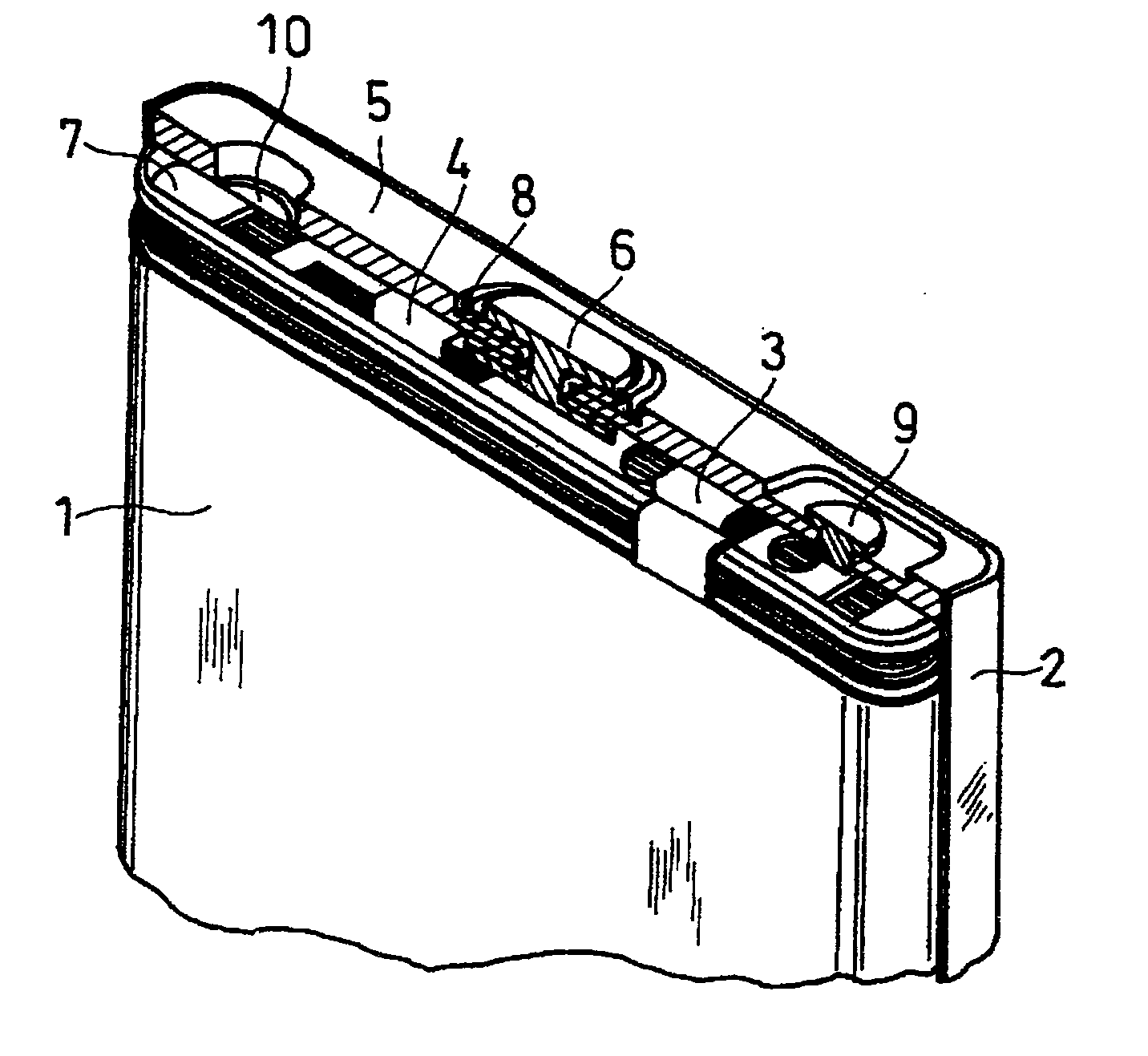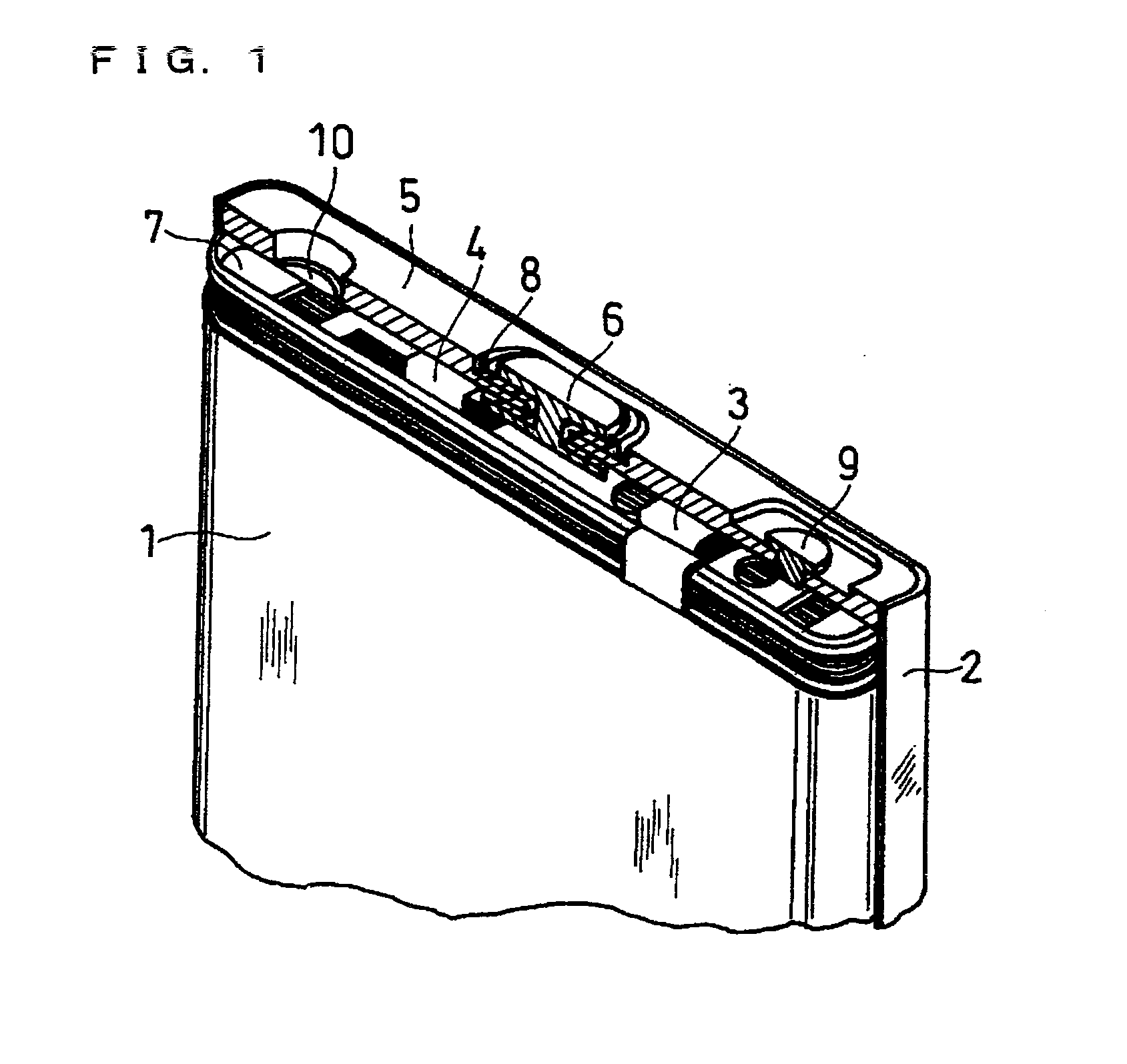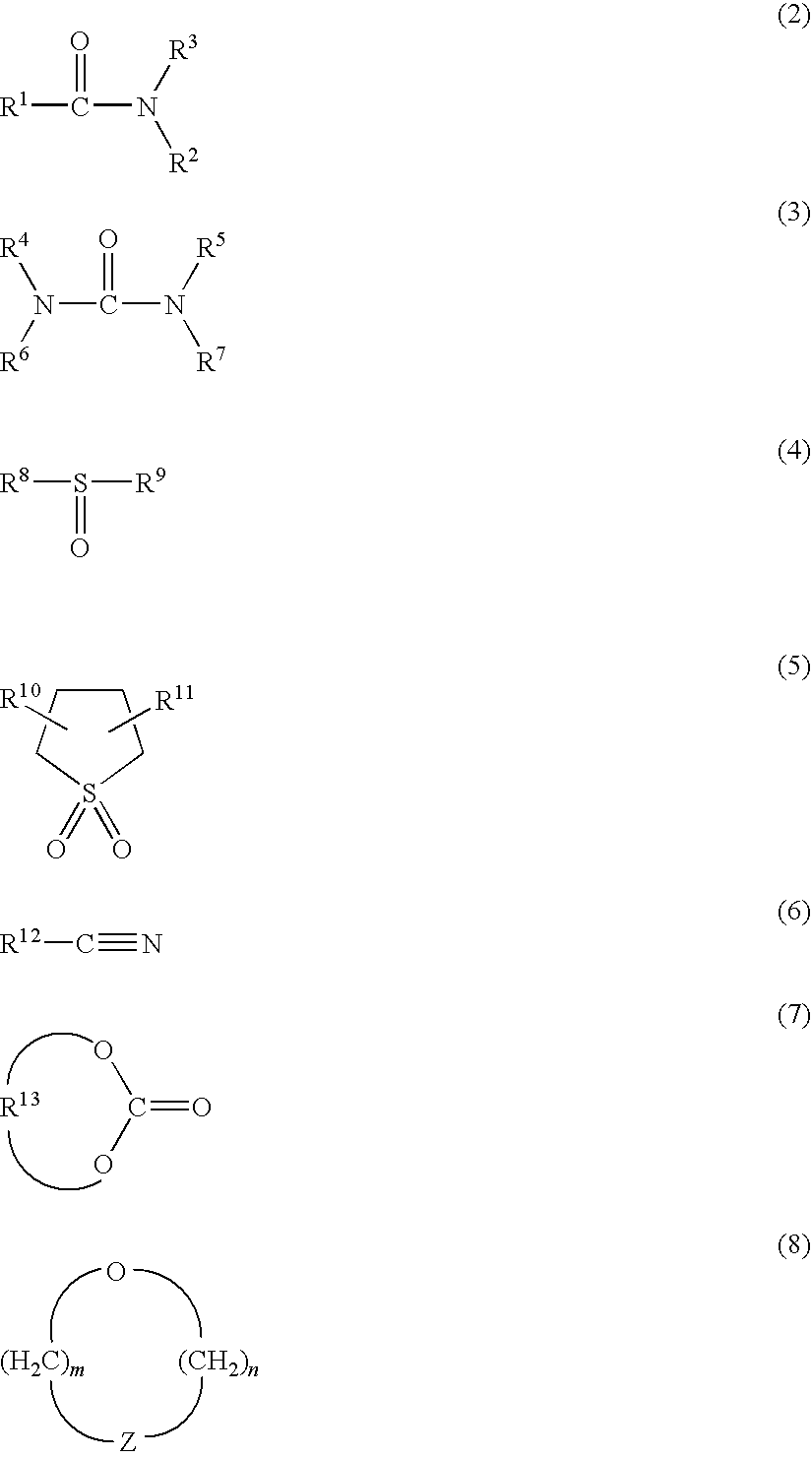Method for producing lithium-containing composite oxide and non-aqueous secondary battery
a composite oxide and secondary battery technology, applied in the direction of nickel compounds, manganates/permanentates, cell components, etc., can solve the problems of limit to the removal of such by-products and limit to the washing effect, so as to improve the battery characteristics and reliability, reduce the inclusion of lithium hydroxide and lithium carbonate, and achieve high degree
- Summary
- Abstract
- Description
- Claims
- Application Information
AI Technical Summary
Benefits of technology
Problems solved by technology
Method used
Image
Examples
example 1
(1) Production of Lithium-Containing Composite Oxide
[0139]A saturated aqueous solution was prepared by adding cobalt sulfate and aluminum sulfate to an aqueous solution of nickel sulfate. The ratio of nickel, cobalt and aluminum contained in the saturated aqueous solution, when expressed in moles of the elements, was adjusted to 80:15:5. Subsequently, sodium hydroxide was added to the saturated aqueous solution to neutralize the solution, thereby generating an Ni0.80Co0.15Al0.05(OH)2 precipitate as a ternary hydroxide. The obtained precipitation product was filtered, washed with water, and then dried at 80° C.
[0140]Next, the ternary hydroxide was heated at 600° C. in the air for 10 hours to obtain Ni0.80Co0.15Al0.05O as a ternary oxide. Furthermore, lithium hydroxide monohydrate was added to the ternary oxide, and it was baked at 800° C. in an oxygen flow for 10 hours so as to obtain a lithium-containing composite oxide (LiNi0.80Co0.15Al0.05O2) as a baked product. The obtained lithi...
examples 2 to 13
[0153]A lithium-containing composite oxide and a non-aqueous secondary battery were produced in the same manner as in EXAMPLE 1, except that, instead of NMP, N-methyl formamide (EXAMPLE 2), N-methyl acetamide (EXAMPLE 3), N-methyl propionamide (EXAMPLE 4), N,N-dimethyl formamide (EXAMPLE 5), N-cyclohexyl pyrrolidone (EXAMPLE 6), N-dimethylimidazolidinone (DMI, EXAMPLE 7), N,N′-dimethyl propylene urea (EXAMPLE 8), dimethylsulfoxide (DMSO, EXAMPLE 9), sulfolane (EXAMPLE 10), acetonitrile (EXAMPLE 11), propylene carbonate (EXAMPLE 12) or dioxane (EXAMPLE 13) was used as a washing solution in an amount of 1000 mL.
example 14
[0156]100 g of a lithium-containing composite oxide represented by a composition formula: LiNi0.80Co0.15Al0.05O2, and 1000 mL of NMP were stirred in a stirrer for one hour. After stirring, the washing solution was removed through filtration, and adjustment was made such that the solids content was 95 wt % or more. Then, the lithium-containing composite oxide from which the washing solution had been removed was placed in a double arm kneader together with 6 g of powdered PVDF (available from Kureha Chemical Industry Co., Ltd.), 40 g of acetylene black and an appropriate amount of NMP, and stirred at a treatment temperature of 30° C. for 30 minutes. In this manner, a positive electrode material mixture paste was prepared. A non-aqueous secondary battery was produced in the same manner as in EXAMPLE 1, except that the thus-obtained positive electrode material mixture paste was used.
PUM
 Login to View More
Login to View More Abstract
Description
Claims
Application Information
 Login to View More
Login to View More - R&D
- Intellectual Property
- Life Sciences
- Materials
- Tech Scout
- Unparalleled Data Quality
- Higher Quality Content
- 60% Fewer Hallucinations
Browse by: Latest US Patents, China's latest patents, Technical Efficacy Thesaurus, Application Domain, Technology Topic, Popular Technical Reports.
© 2025 PatSnap. All rights reserved.Legal|Privacy policy|Modern Slavery Act Transparency Statement|Sitemap|About US| Contact US: help@patsnap.com



